SPECIAL REPORT: How the Southern Poverty Law Center quietly pivoted to gun control
SPLC has more money than all other gun-control groups combined.
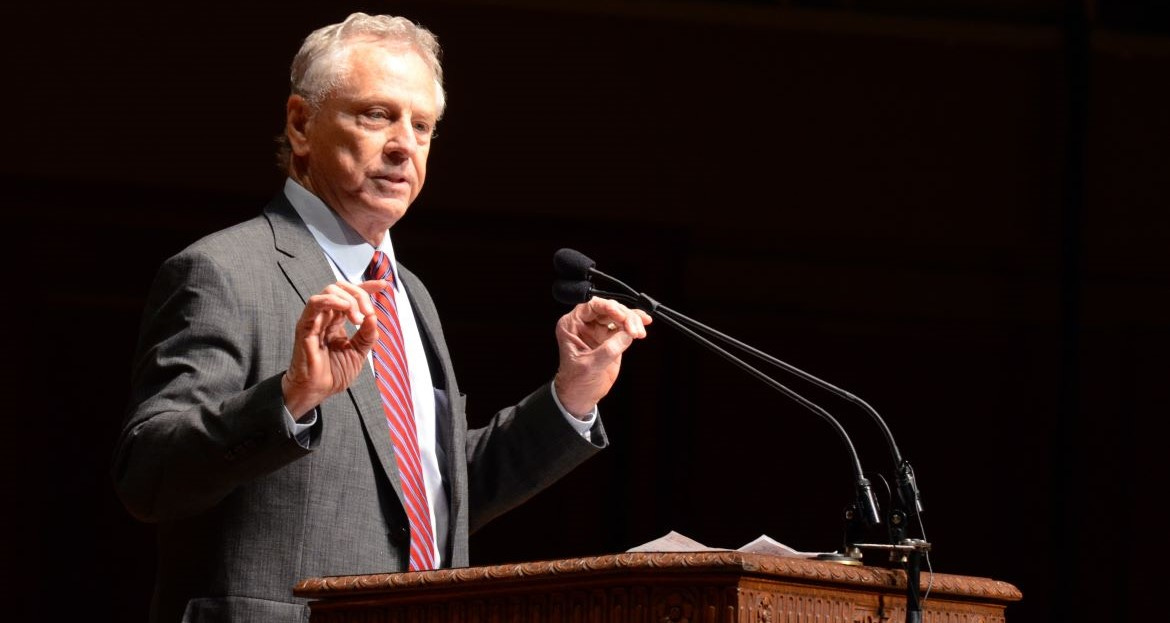
by Lee Williams
For more than 50 years the Southern Poverty Law Center, Inc. battled segregationists, challenged Jim Crow laws and bankrupted the Ku Klux Klan and other violent extremist groups. But ever since 2019, when the SPLC fired its co-founder and media frontman, Morris Dees, after accusations of sexual harassment, gender discrimination and racism surfaced, the nonprofit quietly shifted its focus. Now, rather than advocating for civil rights, the SPLC is fighting against civil rights, specifically those protected by the Second Amendment of the United States Constitution.
Today, SPLC’s press releases, position papers and rhetoric make it nearly indistinguishable from any traditional gun control group, like Brady, Everytown or Giffords, with whom the SPLC has partnered on several occasions. But there are two major differences: The SPLC is flush with cash — far more than all other gun-control groups combined — and it still wields a powerful cudgel, its Hatewatch list, which it uses to publicly shame anyone — including members of the gun-rights community — who disagrees with its principles.
Although their numbers are dwindling, some members of the legacy media still regard the Hatewatch list as gospel, even though it is nearly always wielded against conservative groups rather than progressive ones like Antifa, which the SPLC defines as a “broad, community-based movement composed of individuals organizing against racial and economic injustice.”
It has become relatively easy for SPLC to marginalize gun owners and gun-rights advocates. If someone opposes the government infringing upon their Second Amendment rights, they’re opposed to the government, which makes them antigovernment, in SPLC’s view. The nonprofit always adds extremist to any negative label like a dose of seasoning, so now the victim is transformed into an antigovernment extremist. Once labeled, SPLC quickly adds them to their Hatewatch list and publicly compares them to real antigovernment extremists. Within minutes the poor victim is associated with Klansman, Nazis and actual terrorists, such as Timothy McVeigh. This process is lightyears worse than the tactics used by other gun control groups, which may call someone out on Twitter or in a position paper. This is professional character assassination, pure and simple, and it works. If you don’t think it can happen, ask Cody Wilson. The SPLC hit that poor young man like a freight train.
If you’ve ever wondered how the Biden-Harris administration can claim with a straight face that domestic terrorism and white supremacy are on the rise, take a look at the statements and testimony the SPLC provided them and their Jan. 6 Committee. The SPLC and the Biden-Harris administration have formed a symbiotic relationship. Each group buttresses the other’s spurious claims.
To be clear, SPLC’s newfound gun-control focus does not bode well for those who value their constitutional rights. The SPLC is the wealthiest civil rights charity in the country. Dees was well known as a wealth hoarder. In 2019, one nonprofit watchdog gave his group an “F” grade, because it had amassed more than six years of assets, which were held in reserve. As a result, the nonprofit now has more than a $800 million in net assets, offices in five southern states and approximately 250 employees, including 80 attorneys who have already started filing anti-gun litigation.
While SPLC dabbled a bit during Dees’ tenure, it did not fully embrace gun control until after he was fired. Why the group pivoted so quickly is not fully known. Some say it’s like any other progressive group that suddenly becomes leaderless, rudderless and in search of a purpose. When times are tough, default to guns. Others have speculated it is a carryover from Dees’ leadership style — he always sought sensational cases that would garner media attention, such as filing suit over a copy of the Ten Commandments displayed in a county courthouse, rather than using SPLC’s massive financial strength to combat more immediate problems such as homelessness, joblessness or crime, which are ravaging the minority communities the nonprofit claims to champion.
In addition, the group’s powerful lobbying arm, the SPLC Action Fund, spent more than $2 million last year lobbying in Washington, D.C. and state houses across the country.
As a result, SPLC has more financial and political power than all other gun-control groups combined, and it poses an extreme threat to Second Amendment rights.
Shadow mission
Officially, gun control is not part of the SPLC’s mission, which states that the group “is a catalyst for racial justice in the South and beyond, working in partnership with communities to dismantle white supremacy, strengthen intersectional movements, and advance the human rights of all people.” The term appears nowhere in SPLC’s most recent annual report, nor is it listed as a “program service accomplishment” on its 2021 IRS form 990.
Instead, the group has four “impact areas” and gun control is not among them: “protecting democracy, combating the incarceration and criminalization of communities of color, eradicating poverty and fighting extremism and white supremacy.”
Still, SPLC’s gun control platform mirrors that of most traditional gun control groups. In other words, they touch all the usual bases.
Stand Your Ground laws
The SPLC partnered with the Giffords Law Center to produce a report condemning “Stand Your Ground” laws, which the two groups claim, “fuel racist, lethal violence” and cause “30-50 homicides every month.”
“Highlighting the systemic racism and sexism perpetuated by Stand Your Ground laws, the report calls for the repeal of Stand Your Ground laws in the 27 states where they are enacted and for laws to be passed overturning harmful court decisions that have imposed Stand Your Ground standards on eight other states,” the report states.
In reality, all Stand Your Ground laws do is eliminate a victim’s duty to retreat. The law allows the threat of deadly force to be met with deadly force, instead of legally requiring the victim to run away and possibly get shot in the back.
In Florida, rather than fueling “racist” violence, the law has been used more often by defendants of color than by white defendants.
Homemade firearms
The SPLC has targeted homemade firearms and castigated Defense Distributed owner Cody Wilson, who released 3D printable gun files on his personal website. The group labeled Wilson an “antigovernment wunderkind.”
“Wilson stops short of direct incitement to violence, though he doesn’t voice opposition to mounting calls for violent reprisal against the state in antigovernment circles,” the report states.
The SPLC quickly added Wilson to its Hatewatch list, describing his ideology as “Antigovernment movement.”
UN Arms Control Treaty
Anyone opposed to the United Nation’s Arms treaty is a conspiracy theorist with twisted panties, the SPLC claims.
“Nothing spooks antigovernment conspiracy theorists like the United Nations and its international treaties— particularly when it comes to perceived threats to their right to bear arms,” the report states. “So naturally, far-right paranoiacs really have their panties in a twist over the proposed Arms Trade Treaty (ATT), which would establish standards for the international trade of weapons.”
Protection of Lawful Commerce in Arms Act
The PLCAA protects gun manufacturers and gun dealers by barring most lawsuits based on “the criminal or unlawful misuse of a [firearm] by [a] person or a third party, 15 U.S.C. § 7903(5)(A).” It is often misunderstood and mischaracterized. It does not bar a lawsuit if a product is defective.
In a 2009 story, the SPLC admitted that a recent appeals court ruling upheld the PLCAA but added: “When hate criminals and others who shouldn't have guns get their hands on them, it puts everyone at risk.”
Second Amendment Sanctuaries

More than half of the counties in the United States are now Second Amendment Sanctuaries and the list is growing, according to SanctuaryCounties.com, which tracks the nationwide movement. In fact, the movement is growing so quickly, the website’s owner, Noah Davis, has a hard time keeping it updated. More than a dozen states have declared themselves sanctuary states.
These counties and states are “legally problematic and threaten to override the very democratic systems upon which the country was built,” the SPLC claims, adding that the sanctuaries are popular among “antigovernment extremists.”
“This wave of proposals is the direct result of hysteria around potential new federal and state gun laws and age-old conspiracies about Democrats’ desire to confiscate guns,” the report states. “These are the same fears antigovernment extremists have used to fuel and unify their movement for decades.”
Even Joe Biden disagrees. Biden has never kept his confiscatory plans secret.
“Our work continues to limit the number of bullets that can be in a cartridge, the type of weapons that can be purchased and sold … attempt to ban assault weapons, a whole range of things,” Biden said last month.
Gun Shows
Dees himself castigated gun shows in a 1996 book. He claimed “militia leaders use gun shows to disseminate their anti-government strategy. Dees also notes that in its efforts to take its anti-government and anti-law enforcement message to Middle America, the National Rifle Association utilized gun shows as a key communications conduit. Dees writes that “amid tables laden with Ruger Mini-14 semiautomatic rifles, Mossberg shotguns, and Beretta 9mm pistols, and piled high with holsters, military ponchos, and camouflage uniforms, they peddle the idea of militias as a defense against a tyrannical government.”
While the SPLC has checked all the boxes on the most common gun control issues, it reserves its most extreme vitriol for gun-rights rallies and armed teachers.
Opposed to Freedom of Assembly
All gun owners are racist, Nazis, militia members, violent antigovernment extremists or all of the above, the SPLC would have the public believe, because at pro-gun rallies attended by thousands of people, one or two individuals may have a pin, a patch or a tattoo from one of these groups. It is the ultimate in guilt by association and it defies belief. The SPLC never mentions the thousands of law-abiding Americans who peaceably assemble in support of their Second Amendment rights. If there’s a Confederate flag or a III-Percenter tattoo anywhere in the crowd, the SPLC labels the entire group as extremists.
“Recent nationwide gun rallies tied to far-right extremists and attract hate groups,” one SPLC headline screamed.
“Gun-rights activists and antigovernment extremists are planning a protest in Richmond, Virginia, on Monday fueled by antigovernment conspiracy theories and accompanied by online calls for violence,” read the secondary headline on another SPLC story.
Whenever the SPLC is actually able to identify an extremist group, it usually has only a mere handful of members and no one has ever heard of it, but that never stops the nonprofit from ramping up the group’s potential for violence. Overhype has always been SPLC’s mainstay.
Another tactic is to make bold claims without supporting evidence or attribution. “The Lobby Day event, organized by the Virginia Citizens Defense League (VCDL), has drawn the interest of at least 33 militia groups from across the country,” the Richmond protest story claimed. Not one of the militia groups was identified by name, nor was the source of the information cited.
In a follow-up story, an SPLC report claimed, “At least 18 militias and 34 hate and extremist groups tracked by Hatewatch turned out for the protests that day, with some pledging violence in the face of proposed gun regulation by the Virginia General Assembly.” Of course, no evidence or attribution to bolster these claims was provided. Readers were left wondering: How do they know this?
Opposed to safeguarding students
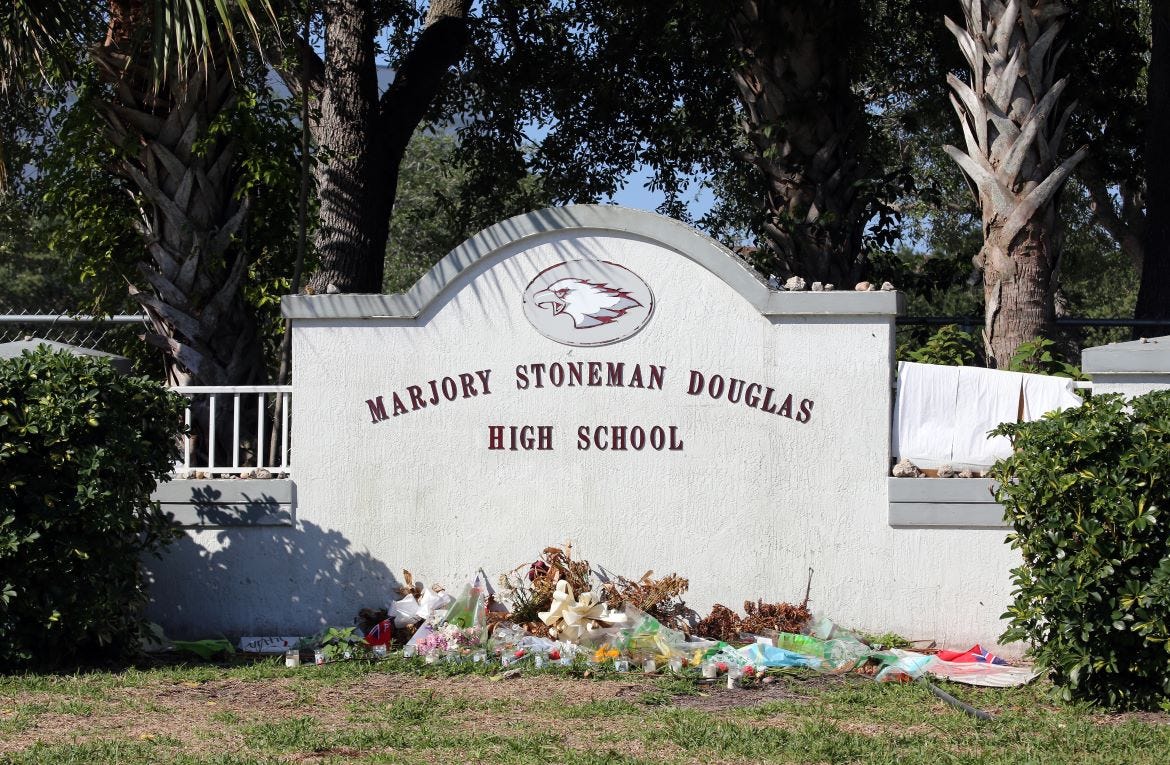
One of the recommendations of the multidisciplinary commission that investigated the 2018 Valentine's Day massacre at Marjory Stoneman Douglas High School in Florida was to arm teachers.
The 16-member commission was comprised of sheriffs, a chief of police, educators, child advocates, school board members, mental health professionals, a state senator and the fathers of two of the shooting victims.
In its 439-page report, the commission recommended that the state legislature should expand Florida’s School Guardian program to allow teachers who volunteer to receive training from their local sheriff on how to carry concealed firearms. But evidently, the SPLC knew better.
Just two weeks after the Parkland massacre the SPLC released a “statement on arming teachers with guns.”
“Some elected officials are proposing common-sense solutions to create safe and supportive school environments. But in multiple Southern states, spurred on by the most toxic voices of the National Rifle Association (NRA) and President Trump, legislators are recommending a misguided and harmful approach that would turn teachers into police forces by allowing or asking them to carry guns,” the statement reads. “Having teachers bring firearms into their schools would make classrooms more dangerous, and would increase the chance of more innocent lives being lost. There are many steps we must take to make our schools safer and stronger, but putting guns into classrooms is not a serious – or safe – solution. Our children deserve better.”
Instead of arming teachers, SPLC said in a report five months after the killings and before the commission’s 439-page report was released, that “the commission should focus on evidence-based approaches to discipline like Positive Behavioral Interventions and Supports, restorative justice, and social and emotional learning.”
“Placing more counselors, nurses and mental health professionals in schools, and conducting school climate assessments and behavioral health interventions, are additional and essential measures school districts can take to create the kind of welcoming and safe schools that foster learning and growth,” SPLC said.
Three months later, the SPLC and Giffords Law Center sued the Trump administration for “records detailing how it has unlawfully permitted the use of federal funds to arm teachers with guns in classrooms across America.”
“Turning teachers into armed guards is both reckless and insulting to the millions of American children and parents who want to see their schools become more safe – not less,” Adam Skaggs, chief counsel for the Giffords Law Center is quoted as saying in an SPLC press release.
In November 2018, the SPLC and Giffords sued the Duval County (Florida) Public Schools and the Duval County School Board over their decision to arm staff. The lawsuit claimed Florida state law prohibits anyone from carrying firearms on school property unless they are a law enforcement officer. The suit also states that while state law “requires every school to hire a ‘safe-school officer,’ it does not require those officers to be armed with guns.”
Florida is not the only state to be sued by the SPLC over armed teachers. Just five months ago, the nonprofit sued the Cobb County (Georgia) School Board over their decision to allow select personnel to carry concealed firearms on campus, on school busses and at school events.
“These school board members routinely enact school policies that are ineffective for the stated goals. To be clear, more guns, more police, and more punishment do not make schools safer. The new policy is not rooted in data, community input, or evidence-based solutions. And, not surprisingly, it will endanger lives and disproportionately impact students of color and students with disabilities who are already subjected to discriminatory discipline and over-policing in the district,” Mike Tafelski, SPLC’s senior supervising attorney said in a press release announcing the lawsuit.
Suspicious financials
According to the charity watchdog Guidestar, SPLC has more than $801 million in assets. The assets of Everytown, Giffords and Brady — combined — total $31 million, or around 3% of what SPLC has amassed.
SPLC’s most recent IRS form 990 confirms that the nonprofit is swimming in money, but the form raises more questions than it answers. The names of the nonprofit’s donors and the amount of their contributions are “restricted.” And there are very suspicious investments.
“The Center has ownership in several foreign corporations. However, the Center’s ownership percentage in these corporations does not rise to the level of reporting on the Form 5471,” the document states.
The nonprofit’s endowment fund is staggering. It has total assets worth more than $731 million. It was started shortly after SPLC was founded to ensure “that the SPLC has the financial strength to address, over the long haul, the entrenched problems our country faces.” Its assets consist of $10 million in cash plus bonds and an assortment of public and private equity funds.
SPLC’s salary structure is massive. As its critics have said, the nonprofit’s senior staff is extremely well compensated. SPLC’s interim president/CEO Karen Baynes Dunning received a salary and benefits package worth more than $386,000. The man she replaced, outgoing president/CEO Richard Cohen, received more than $413,009 in salary and benefits. The nonprofits chief fundraiser was paid more than $260,000. Its “director of teaching tolerance” made more than $200,000.
The average household income in Montgomery, Alabama, where SPLC’s headquarters is located, is $68,149 with a poverty rate of 24.24%.
The salaries of the nonprofit’s support staff, who voted to form a union shortly after Dees’ firing and successfully unionized last month, are not addressed in the IRS form.
“The SPLC’s work is supported primarily through donor contributions. No government funds are received or used for its efforts,” the nonprofit’s website states. “The SPLC is proud of the stewardship of its resources.”
‘Plantation’ boss
Morris Seligman Dees Jr., 86, may be the only nonprofit chief whose life and career inspired two Hollywood movies.
Corbin Bernson played Dees in the 1991 made-for-TV movie “Line of Fire: The Morris Dees Story.” Wayne Rogers of M*A*S*H fame played Dees in “Ghosts of Mississippi,” which was released in 1996.
Dees has been described as charismatic and has received dozens of accolades and professional awards, but he has also been the subject of many serious complaints. For decades the legacy media ignored any criticism, even when the complaints came from members of Dees’ own staff. Things changed in the early 1990s, when his hometown newspaper, the Montgomery Advertiser, launched an investigation into SPLC’s finances and how Dees and other senior managers treated their predominantly Black support staff.
Jim Tharpe, the Advertiser’s former managing editor, recounted the details of his newspaper’s investigation in a column he wrote for the Washington Post, which was published shortly after Dees was fired.
“SPLC leaders threatened legal action on several occasions, and at one point openly attacked the newspaper’s investigation in a mass mailing to Montgomery lawyers and judges. Then they slammed the door,” Tharpe wrote.
After three years of investigative reporting, the Advertiser published an eight-part series titled: “Rising Fortunes: Morris Dees and the Southern Poverty Law Center.”
The journalists uncovered a plethora of problems inside the nonprofit, including “a deeply troubled history with its relatively few black employees, some of whom reported hearing the use of racial slurs by the organization’s staff and others who ‘likened the center to a plantation’; misleading donors with aggressive direct-mail tactics; exaggerating its accomplishments; spending most of its money not on programs but on raising more money; and paying its top lavish salaries.”
Dees and his staff denied all wrongdoing, launched an aggressive damage-control campaign and condemned the series. It’s an age-old tactic: when someone can’t handle the message, they attack the messenger. It didn’t work. In 1995, the series was named as a finalist for the Pulitzer Prize.
In his Washington Post column, Tharpe calls on the IRS and the U.S. Justice Department’s Civil Rights Division to investigate the SPLC.
“Any investigation should take a close look at the SPLC’s finances. It should look at what the center has told donors in its mail solicitations over the years. And it should take a close look at how that donor money has been spent. Investigators should also look at how SPLC staffers have been treated over the years. Where was the center’s board when this mistreatment was going on? And why did no one step up sooner?” Tharpe wrote.
Tharpe was not alone in his criticism of the nonprofit. Bob Moser, who worked as a staff writer at SPLC from 2001 to 2004, recounted similar concerns in a column he wrote for The New Yorker, which was published shortly after his former boss was shown the door.
“For those of us who’ve worked in the Poverty Palace, putting it all into perspective isn’t easy, even to ourselves. We were working with a group of dedicated and talented people, fighting all kinds of good fights, making life miserable for the bad guys,” Moser wrote. “And yet, all the time, dark shadows hung over everything: the racial and gender disparities, the whispers about sexual harassment, the abuses that stemmed from the top-down management, and the guilt you couldn’t help feeling about the legions of donors who believed that their money was being used, faithfully and well, to do the Lord’s work in the heart of Dixie. We were part of the con, and we knew it.
“It wasn’t funny then. At this moment, it seems even grimmer. The firing of Dees has flushed up all the uncomfortable questions again. Were we complicit, by taking our paychecks and staying silent, in ripping off donors on behalf of an organization that never lived up to the values it espoused? Did we enable racial discrimination and sexual harassment by failing to speak out? ‘Of course we did,’ a former colleague told me, as we parsed the news over the phone,” Moser wrote.
At the time, the SPLC did not publicly address the reasons for Dees’ firing. Then-president/CEO Richard Cohen issued a short statement shortly before Dee’s bio was scrubbed from the SPLC website.
“As a civil rights organization, the SPLC is committed to ensuring that the conduct of our staff reflects the mission of the organization and the values we hope to instill in the world,” Cohen’s statement reads. “When one of our own fails to meet those standards, no matter his or her role in the organization, we take it seriously and must take appropriate action.”
Shortly after Dees’ firing, the Alabama Political Reporter and several other local news sites obtained copies of an internal SPLC email, which was signed by numerous employees.
“Specifically, the employees’ email alleged multiple instances of sexual harassment by Dees, and it alleges that reports of his conduct were ignored or covered up by SPLC leadership. A subsequent letter from other SPLC employees demands an investigation into the alleged coverup of Dees’ alleged harassment,” the APR story states. “The emails noted that multiple female SPLC employees had resigned over the years due to the harassment and/or the subsequent retaliation by SPLC leadership when they reported the incidents.”
Dees, according to these news sources, denied any wrongdoing.
Anti-gun Democrat
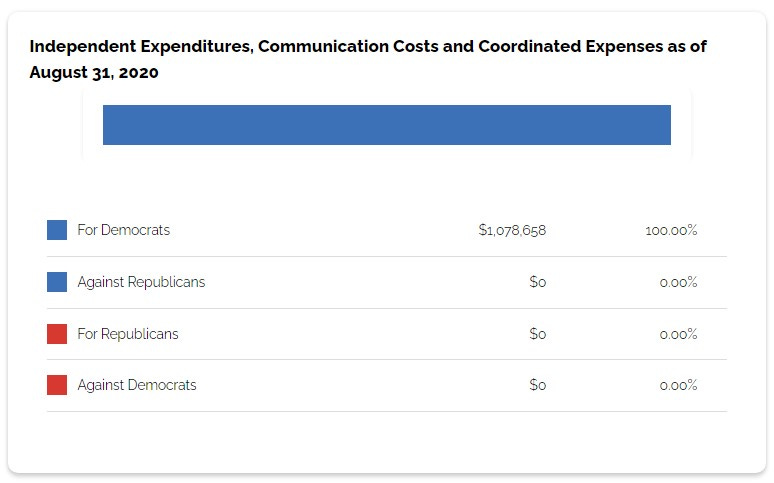
The SPLC has never been able to achieve its stated goal of nonpartisanship. It is a far left-leaning organization, from the top down.
According to his personal campaign donations, Dees has a long history of supporting Democratic candidates, including John Edwards, John Kerry and Bill Clinton. Earlier in his career, he served as finance director for George McGovern’s, Jimmy Carter’s and Edward Kennedy’s presidential campaigns.
Nine months after he was fired, Dees was linked to an anti-NRA group, which listed him as its founder on its now-defunct website, according to the Montgomery Advertiser.
Dees denied that he founded the group — The Association for Responsible Gun Ownership (TARGO) — but admitted he did support the group’s goals. He told the newspaper he joined another anti-gun group and was asked to help with TARGO.
Dees said he did not know what tactics the groups would use against the NRA. “We’ll fight them any way we can,” he told the newspaper. “We’ll work closely with other gun control groups.”
Inciting violence
On Aug.15, 2012, Jessica Prol Smith was working as a writer and editor at the Christian nonprofit Family Research Council, in Washington, D.C., when her office was suddenly locked down because of a security threat.
An armed assailant, who was later convicted of terrorism and other crimes, entered the building with the intent to kill as many staffers as he could. He later admitted he brought 15 Chick-fil-A sandwiches, which he intended to smear on his victims’ faces as a political statement. He had chosen the Family Research Council because the SPLC listed it as a hate group.
Thankfully, an unarmed security guard managed to subdue the assailant and hold him until police arrived, but he was shot once in the arm during the takedown.
Ms. Prol Smith agreed to answer questions about the SPLC. Here is the exchange:
How dangerous is SPLC's Hatewatch label?
“The SPLC’s Hatewatch label is deceptive and profoundly dangerous. The group did some good work decades ago, when it fought segregation in the South. But for years, now, the SPLC has chosen to smear its political opponents and lump mainstream conservatives together with violent neo-Nazis and the KKK.
That’s obviously an effective fundraising strategy but it destroys our ability to get along with neighbors, friends, or family who don’t share our identical beliefs.
The SPLC also doesn’t appear to show any remorse over the reality that their ‘hate’ label has inspired violence. Back in 2012, a troubled young man took a cue from the SPLC hate list, packed his backpack with ammo and Chick-fil-A sandwiches and decided to target the Christian nonprofit where I worked. He planned to shoot the place up and smear sandwiches on our lifeless faces.
When I reflected on the incident and told my story in 2019, the SPLC responded by repeating their smear and fundraising off of it.”
Do you have any advice for people who find themselves on the Hatewatch list?
“It’s uncomfortable to be smeared as a hater and a bigot, but I think it’s possible to care too much what others think of you and your convictions. My Christian faith has taught me that it’s possible to be thoroughly loving and meticulously civil—but still face irrational abuse for speaking truth. If you’re the praying sort of person, I’d suggest praying that the SPLC’s leaders benefit from a redemptive, Damascus-road experience.
It's reassuring to know that federal courts, former SPLC employees, and even some reluctant progressive advocates have been dismissing the SPLC’s Hatewatch label as subjective and, in some cases, a total scam.
But while the ‘hate’ labels harm dialogue and hold far too much influence in politics and corporate America, I’m optimistic that the SPLC’s strategy of abuse and deception isn’t ultimately a winning one.”
What is your reaction that the SPLC has now shifted to gun control?
“The SPLC has shown an appetite for fundraising off of the fears of liberals so it’s hardly surprising that they've expanded their portfolio to include gun control. Passions understandably run high when American citizens debate gun policy and I have very little confidence that the SPLC will help this debate be more constructive.”
In your opinion, will Dees' firing change the SPLC, or will it continue on unchanged?
“As long as they are alive, people and their organizations can change, but I’m hardly optimistic that the SPLC will improve because Dees is gone. Mr. Dees may have contributed to the corruption and discrimination, but the SPLC is making a financial killing by fanning the culture wars in an aggressive and uncivil manner. Just a brief glance over recent blog posts lead me to believe that—at least for now—they’re going to paint ‘HATE’ in big red letters over anyone and anything they don’t like.”
Uncertain future
Dees may be gone, but his legacy still permeates throughout the nonprofit he co-founded 51 years ago, because he hired many of SPLC’s senior staff. The nonprofit’s future is uncertain. Will the SPLC continue with Dees’ style of partisan attacks on Second Amendment supporters, or will it chart a new course or resume its original mandate? It’s not clear. The SPLC did not respond to requests seeking their comments for this story.
It is hoped that the once-vaunted nonprofit will return to its original mission.
“During its formative years, the Southern Poverty Law Center did some great work. They took on the Klan, Nazis and the Aryan Nation, but nowadays they seem hellbent on conflating law-abiding gun owners with these hate groups,” said Alan M. Gottlieb, founder and executive vice president of the Second Amendment Foundation. “This needs to stop, and quite frankly they should be ashamed. The SPLC should return to its roots and its original core values. This country can always use another true civil-rights watchdog. We don’t need another gun-control group. We’ve got more than enough of those already.”
The Second Amendment Foundation’s Investigative Journalism Project wouldn’t be possible without you. Click here to make a tax-deductible donation to support pro-gun stories like this.




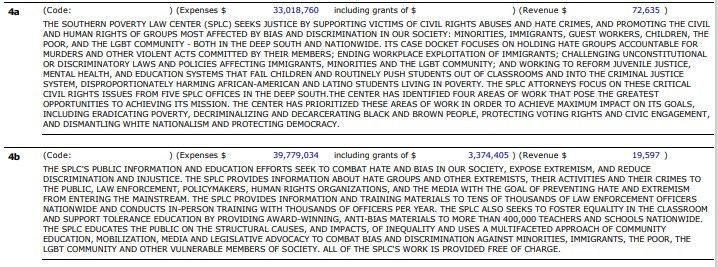
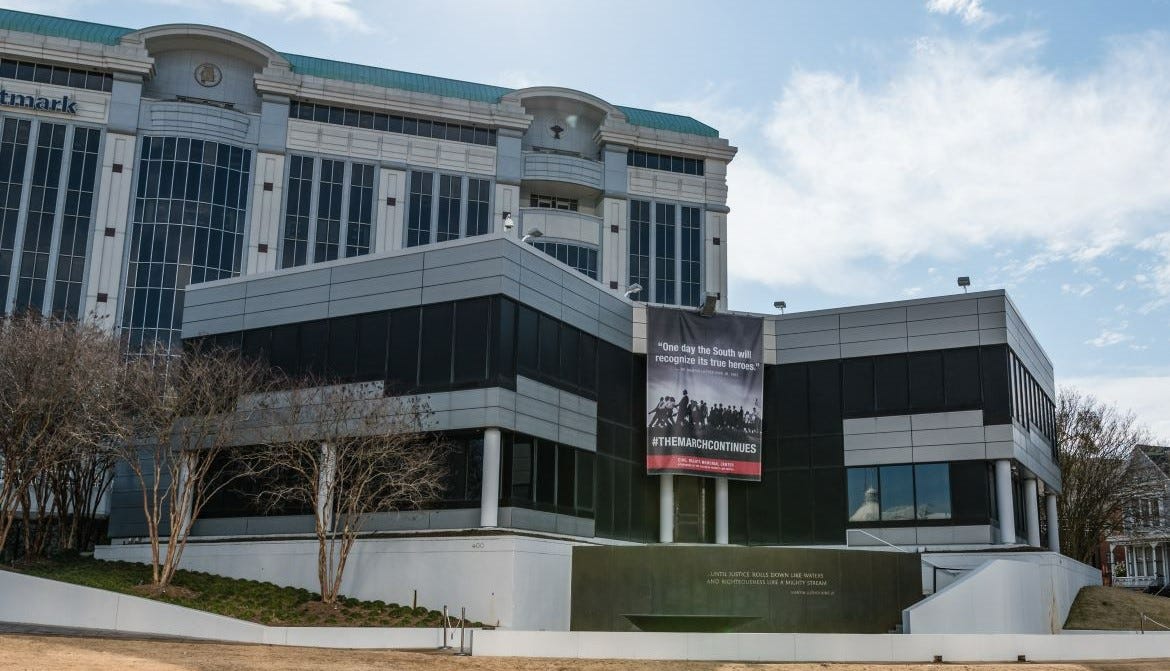

The $PLC is a giant money laundering anti-White organization that is unashamedly far more of a "hate group" than most of the outfits on their listing.
Thanks for all the info Lee. This is more than I could have ever found. They have been hypocrites for decades with their lists. No surprise but lots of great perspective to further recognize their goals and plan.